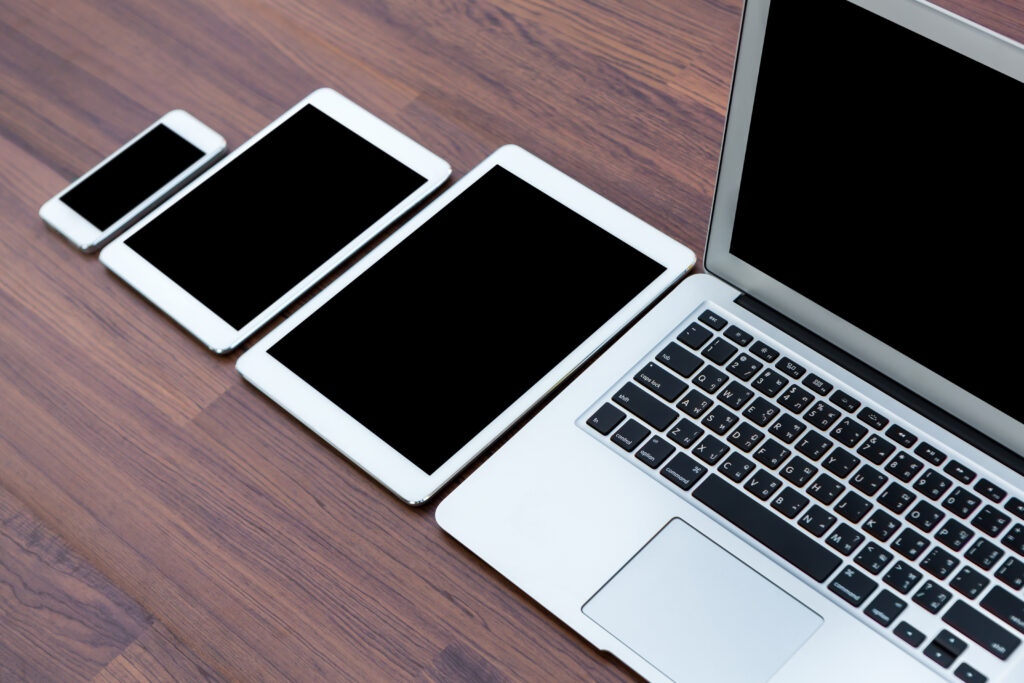Whether it’s the latest iPhone, iPad, or a sleek Mac computer, one thing’s for sure: you want to keep it safe and secure. We understand the excitement of unboxing your new gadget, but before you dive into exploring its features and downloading your favorite apps, let’s talk about something crucial—security. In this article we will guide you with the best way to secure your Apple devices.

Setting Up Your Apple Device’s Security Features
Setting up the built-in security features on your Apple device is the first step to safeguarding your privacy and protecting your valuable data. Here, we’ll walk you through some essential security measures you can take:
1. Set a Complex Passcode
Sure, unlocking your iPhone or iPad with Face ID or Touch ID seems convenient, but did you know that using a passcode is considered more secure? Face ID can be fooled by a well-crafted photograph, and fingerprint copies are not entirely unheard of. Even if you use biometric authentication, setting a strong alphanumeric passcode adds an extra layer of security.
To set or change your passcode:
- Go to Settings > Face ID & Passcode (or Touch ID & Passcode).
- Select “Change Passcode” and follow the prompts to create a strong passcode.
What many people don’t realize is that setting a passcode also encrypts all data on your device by default, making it unreadable even if someone tries to bypass it.
2. Enable Two-Factor Authentication (2FA) on Apple ID
Two-factor authentication adds an extra layer of security to your Apple ID by requiring a verification code in addition to your password. This means that even if someone gets hold of your password, they won’t be able to access your account without the second factor—usually sent to your trusted device or phone number.
To enable 2FA:
- Go to Settings > [your name] > Password & Security.
- Tap “Turn On Two-Factor Authentication” and follow the setup instructions.
3. Back Up and Encrypt Your Files
Backing up your files is essential in case of device loss or failure. iCloud backups are encrypted by default, but local backups to your Mac may not be. Encrypting your local backups ensures that your data remains secure even if someone gains access to your computer.
To encrypt backups on your Mac:
- In Finder or iTunes, select “Encrypt iPhone/iPad/iPod backup” in the Backups preferences pane.
4. Use the Find My App
Find My is a powerful tool for locating lost or stolen iOS devices. It allows you to play a sound, track the device’s location on a map, lock it remotely, or erase its data. Even if your device is offline, Find My will take action the next time it connects to the internet.
To enable Find My:
- Go to Settings > [your name] > Find My and turn on the feature.
Additional Tips for Apple Device Security
- Before selling or giving away your iPhone, iPod, or iPad, make sure to erase all data from the device.
- Consider installing a reputable VPN app like ForestVPN to secure your online connections and protect your privacy.
FAQs
1. Can I use ForestVPN to secure my Apple devices?
Absolutely! ForestVPN offers dedicated apps for iPhone, iPad, and Mac, ensuring secure online connections and protecting your privacy while using your Apple devices.
2. Is two-factor authentication really necessary for Apple ID?
Yes, enabling two-factor authentication adds an extra layer of security to your Apple ID, making it much harder for unauthorized users to gain access to your account.
3. How often should I back up my Apple device?
It’s a good practice to regularly back up your Apple device, ideally on a weekly basis, to ensure that your data is safe in case of unexpected device loss or failure.
4. Can Find My help me locate a lost or stolen iPhone?
Yes, Find My allows you to track the location of your lost or stolen iPhone on a map, play a sound to help locate it, remotely lock it, or erase its data to prevent unauthorized access.
5. Why is it important to encrypt local backups of my Apple device?
Encrypting local backups adds an extra layer of security to your data, ensuring that even if someone gains access to your computer, they won’t be able to read the contents of your backups without the encryption key.
Vpn iphone free hotspot
When it comes to securing your iPhone’s hotspot with a VPN, it’s essential to choose a reliable service like ForestVPN. Using a free VPN for your iPhone hotspot may seem tempting, but it often comes with limitations and potential risks.
Free VPNs may offer limited server locations, slower connection speeds, and data caps, which can hinder your browsing experience. Moreover, some free VPN providers may log your online activities or inject ads into your browsing sessions, compromising your privacy.
With ForestVPN, you get unlimited bandwidth, high-speed servers, and robust security features to protect your hotspot connection. Our strict no-logs policy ensures that your online activities remain private, giving you peace of mind wherever you go.
Don’t compromise on your online security. Choose ForestVPN to protect your iPhone hotspot and enjoy a safe and unrestricted browsing experience. Visit ForestVPN.com to get started today!
